Opinion & Analysis
Is a PGA Golf Management program for you?
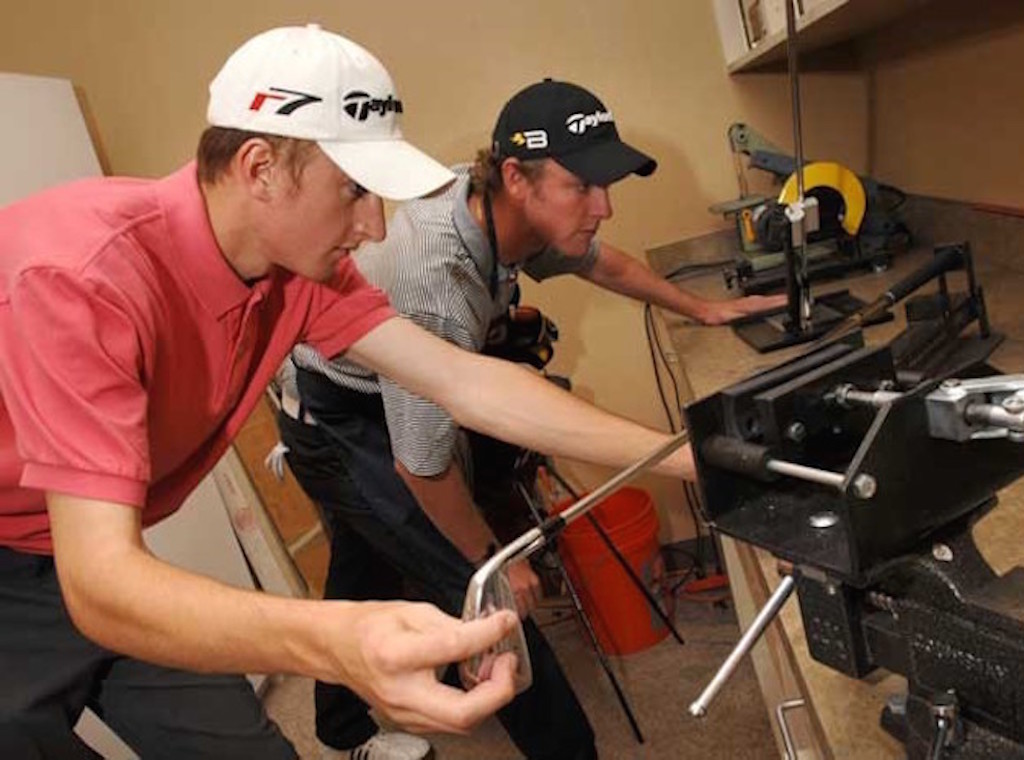
Editor’s note: Henry Stetina is the Program Coordinator for the PGA Golf Management Program at New Mexico State University.
You’re a senior in high school, and if you’re anything like I was, you’re scared, nervous and uncertain of what to do next. Assuming that you love golf, I am going to guess that you’ve probably dreamed of playing golf in college and ultimately playing on the PGA Tour. As good as that sounds, unfortunately for most of us, it is just that: a dream.
I believe in following your dreams, but the chances of actually making the PGA Tour are very slim from a statistical standpoint.
So now what? What are you going to do with your life and/or college education? Well, there is still hope for being around the game that you love, while simultaneously making a comfortable living. Becoming a PGA Golf Professional who manages the operations of a golf facility, coordinates tournaments, merchandises and gives golf lessons is a viable option for anyone with a passion for golf.
The Program
The PGA Golf Management University Program is a 4.5-year program, offering students the opportunity to earn PGA membership while earning a bachelor’s degree in a field relevant to the golf industry. Students complete Levels 1, 2, and 3 of the PGA’s PGM Education, 16 months of internship under direct supervision of a PGA professional, and the PGA’s Playing Ability Test, thus earning membership into the PGA of America upon graduation and eligible employment.
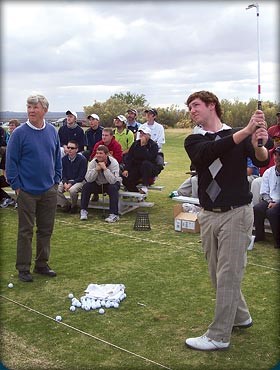
Pictured above: PGA Hall of Fame instructor, Michael Hebron, hosts teaching seminars for PGA Golf Management students.
Not only do students complete the necessary coursework for the PGA, but they also have access to seminars taught by some of the industry’s leading experts in teaching, club repair, rules of golf, club management, and other specialties within the golf industry.
The program provides students with hands-on experience teaching golfers of all levels, through group and private lessons, as well as learning how to fit and repair golf clubs, including re-gripping and re-shafting. Many of the university programs have teaching facilities that are equipped with the industry’s leading launch monitors, video equipment, and motion analysis software, which teaches students how to utilize technology for teaching and club fitting.
While a large part of the curriculum is based on developing golf instructors, students also have the opportunity to better their own games through player development programs taught by expert golf instructors and tournament programs that allow students the opportunity to test their game in competition.
The Mentor
One of the most useful resources for the students is the faculty and staff who run the PGA Golf Management Programs. The directors are educated and respected within the golf industry, and their relationships and expertise help turn students into professionals.
[quote_box_center]“The opportunity to help mold these young students into professionals and find out what they want as a career has been gratifying and challenging,” says Pat Gavin, PGA member and Director of the PGA Golf Management Program at New Mexico State University. “Most students come to NMSU knowing they love golf, but my job is to help them decide that they want the golf industry as a career.”[/quote_box_center]
The Student
As an incoming freshman, you can expect to complete the Qualifying Level and begin Level 1 of the PGA’s PGM Education. This includes, but is not limited to: Intro to the PGA Golf Management Program, Constitution of the PGA of America, Rules of Golf, Business Planning, and Customer Relations. At the completion of freshman year, students embark on a three-month internship at a green-grass facility under the supervision of a PGA member.
Note: 99.9 percent of internships are paid internships, and many include free housing. Students are never expected to work without pay.
Most PGA Golf Management Programs use a schedule where students attend school in the fall and spring, and then begin an internship during the summer.
Many students get the opportunity to teach junior golf clinics as well as group and individual lessons for adults while on internship. Students also get the opportunity to meet leaders in the golf industry and influential people in the business world.
The Alumni
One of the greatest benefits of the PGA Golf Management Programs is its fraternal-like atmosphere, and the networking opportunities that are associated with it. After graduation, many students will pursue a career in the golf industry.
[quote_box_center]“I receive emails on a daily basis regarding job openings, and I immediately forward them to our database of over 700 alumni and 150 current students,” Gavin says. “We pride ourselves on 100 percent job placement on internships as well as permanent positions upon graduation.”[/quote_box_center]
Questions to Ask
Q: What degree will I earn, and does this degree carry any weight outside of golf?
Some universities offer degrees in Business, while others are in Hotel, Restaurant and Tourism Managment (HRTM), or even in Parks and Recreation.
Let’s say that you complete the PGA Golf Management Program, and five years into your career you realize that the golf industry isn’t for you. At that point, the degree becomes really important. Changing careers and getting a new job may be dependant on the degree that you earned in college. Also, there are some universities that don’t even write “PGA Golf Management” or “golf” anywhere on the diploma. This is to protect the graduates in the event that he/she wishes to make a career change and leave the golf industry.
Q: Can I become a golf professional without entering this program?
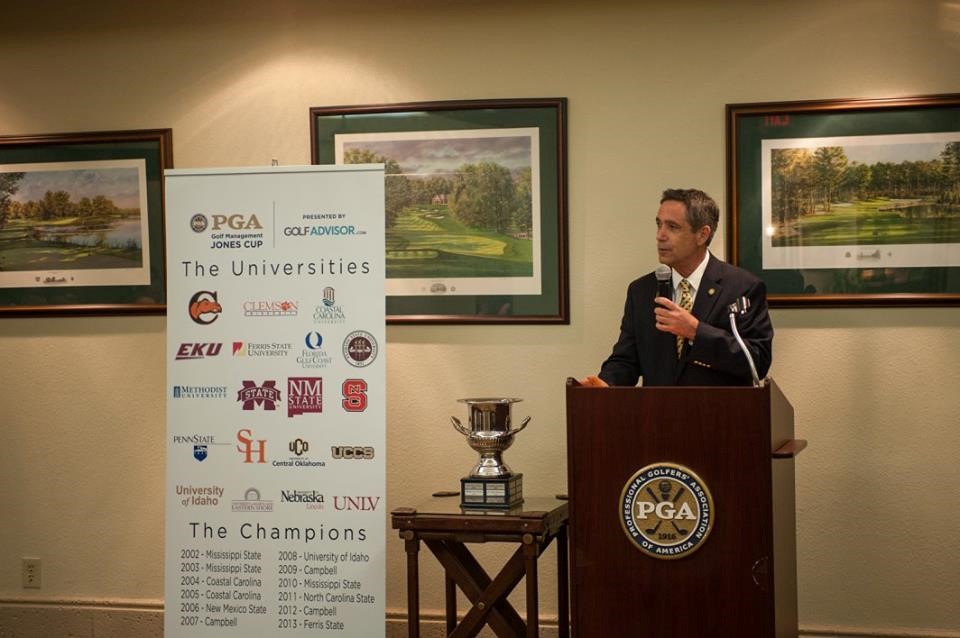
PGA Master Professional, Bill Cioffoletti, speaks to PGA Golf Management students prior to the 2014 PGA Jones Cup
If PGA membership is what you seek but you don’t like the idea of a 4.5-year university program, there is another option. You could enroll in the PGA apprentice program, go through the same curriculum as the university program and earn PGA membership. This a great option for individuals who already have a college degree. A disadvanage of the aprentice program is that it does not come with the networking opportunities of the PGA Golf Management Program, and it requires going to the PGA Education Center in Florida to attend various seminars.
The Decision
For all you high school students, ask yourself a simple question: “What job will allow me to look forward to going to work every single day?”
If it’s golf, then maybe you should consider a career in the golf industry. It will keep you connected to the game that you love and allow you to share your passion for golf with others.
For more information regarding the PGA Golf Management Program, click here.
- LIKE71
- LEGIT15
- WOW7
- LOL4
- IDHT2
- FLOP1
- OB6
- SHANK24
Opinion & Analysis
The Wedge Guy: What really makes a wedge work? Part 1

Of all the clubs in our bags, wedges are almost always the simplest in construction and, therefore, the easiest to analyze what might make one work differently from another if you know what to look for.
Wedges are a lot less mysterious than drivers, of course, as the major brands are working with a lot of “pixie dust” inside these modern marvels. That’s carrying over more to irons now, with so many new models featuring internal multi-material technologies, and almost all of them having a “badge” or insert in the back to allow more complex graphics while hiding the actual distribution of mass.
But when it comes to wedges, most on the market today are still single pieces of molded steel, either cast or forged into that shape. So, if you look closely at where the mass is distributed, it’s pretty clear how that wedge is going to perform.
To start, because of their wider soles, the majority of the mass of almost any wedge is along the bottom third of the clubhead. So, the best wedge shots are always those hit between the 2nd and 5th grooves so that more mass is directly behind that impact. Elite tour professionals practice incessantly to learn to do that consistently, wearing out a spot about the size of a penny right there. If impact moves higher than that, the face is dramatically thinner, so smash factor is compromised significantly, which reduces the overall distance the ball will fly.
Every one of us, tour players included, knows that maddening shot that we feel a bit high on the face and it doesn’t go anywhere, it’s not your fault.
If your wedges show a wear pattern the size of a silver dollar, and centered above the 3rd or 4th groove, you are not getting anywhere near the same performance from shot to shot. Robot testing proves impact even two to three grooves higher in the face can cause distance loss of up to 35 to 55 feet with modern ‘tour design’ wedges.
In addition, as impact moves above the center of mass, the golf club principle of gear effect causes the ball to fly higher with less spin. Think of modern drivers for a minute. The “holy grail” of driving is high launch and low spin, and the driver engineers are pulling out all stops to get the mass as low in the clubhead as possible to optimize this combination.
Where is all the mass in your wedges? Low. So, disregarding the higher lofts, wedges “want” to launch the ball high with low spin – exactly the opposite of what good wedge play requires penetrating ball flight with high spin.
While almost all major brand wedges have begun putting a tiny bit more thickness in the top portion of the clubhead, conventional and modern ‘tour design’ wedges perform pretty much like they always have. Elite players learn to hit those crisp, spinny penetrating wedge shots by spending lots of practice time learning to consistently make contact low in the face.
So, what about grooves and face texture?
Grooves on any club can only do so much, and no one has any material advantage here. The USGA tightly defines what we manufacturers can do with grooves and face texture, and modern manufacturing techniques allow all of us to push those limits ever closer. And we all do. End of story.
Then there’s the topic of bounce and grinds, the most complex and confusing part of the wedge formula. Many top brands offer a complex array of sole configurations, all of them admittedly specialized to a particular kind of lie or turf conditions, and/or a particular divot pattern.
But if you don’t play the same turf all the time, and make the same size divot on every swing, how would you ever figure this out?
The only way is to take any wedge you are considering and play it a few rounds, hitting all the shots you face and observing the results. There’s simply no other way.
So, hopefully this will inspire a lively conversation in our comments section, and I’ll chime in to answer any questions you might have.
And next week, I’ll dive into the rest of the wedge formula. Yes, shafts, grips and specifications are essential, too.
- LIKE22
- LEGIT7
- WOW1
- LOL1
- IDHT2
- FLOP2
- OB1
- SHANK1
Golf's Perfect Imperfections
Golf’s Perfect Imperfections: Amazing Session with Performance Coach Savannah Meyer-Clement

In this week’s episode, we spent some time with performance coach Savannah Meyer-Clement who provides many useful insights that you’ll be able to implement on the golf course.
- LIKE0
- LEGIT0
- WOW0
- LOL0
- IDHT0
- FLOP0
- OB0
- SHANK0
19th Hole
Vincenzi’s 2024 RBC Heritage betting preview: Patrick Cantlay ready to get back inside winner’s circle

Just a two-hour drive from Augusta National, the PGA TOUR heads to Harbour Town Golf Links in Hilton Head Island, S.C. Hilton Head Island is a golfer’s paradise and Harbour Town is one of the most beautiful and scenic courses on the PGA TOUR.
Harbour Town Golf Links is a par-71 that measures 7,121 yards and features Bermuda grass greens. A Pete Dye design, the course is heavily tree lined and features small greens and many dog legs, protecting it from “bomb-and-gauge” type golfers.
The field is loaded this week with 69 golfers with no cut. Last year was quite possibly the best field in RBC Heritage history and the event this week is yet another designated event, meaning there is a $20 million prize pool.
Most of the big names on the PGA Tour will be in attendance this week with the exceptions of Hideki Matsuyama and Viktor Hovland. Additionally, Webb Simpson, Shane Lowry, Gary Woodland and Kevin Kisner have been granted sponsors exemptions.
Past Winners at Harbour Town
- 2023: Matt Fitzpatrick (-17)
- 2022: Jordan Spieth (-13)
- 2021: Stewart Cink (-19)
- 2020: Webb Simpson (-22)
- 2019: CT Pan (-12)
- 2018: Sotoshi Kodaira (-12)
- 2017: Wesley Bryan (-13)
- 2016: Branden Grace (-9)
- 2015: Jim Furyk (-18)
In this article and going forward, I’ll be using the Rabbit Hole by Betsperts Golf data engine to develop my custom model. If you want to build your own model or check out all of the detailed stats, you can sign up using promo code: MATTVIN for 25% off any subscription package (yearly is best value).
Key Stats For Harbour Town
Let’s take a look at key metrics for Harbour Town Golf Links to determine which golfers boast top marks in each category over their past 24 rounds.
Strokes Gained: Approach
Strokes Gained: Approach is exceedingly important this week. The greens at Harbour Town are about half the size of PGA TOUR average and feature the second-smallest greens on the tour. Typical of a Pete Dye design, golfers will pay the price for missed greens.
Total SG: Approach Over Past 24 Rounds
- Scottie Scheffler (+1.27)
- Tom Hoge (+1.27)
- Corey Conners (+1.16)
- Austin Eckroat (+0.95)
- Cameron Young (+0.93)
Good Drive %
The fairways at Harbour Town are tree lined and feature many dog legs. Bombers tend to struggle at the course because it forces layups and doesn’t allow long drivers to overpower it. Accuracy is far more important than power.
Good Drive % Over Past 24 Rounds
- Brice Garnett (88.8%)
- Shane Lowry (+87.2%)
- Akshay Bhatia (+86.0%)
- Si Woo Kim (+85.8%)
- Sepp Straka (+85.1%)
Strokes Gained: Total at Pete Dye Designs
Pete Dye specialists tend to play very well at Harbour Town. Si Woo Kim, Matt Kuchar, Jim Furyk and Webb Simpson are all Pete Dye specialists who have had great success here. It is likely we see some more specialists near the top of the leaderboard this week.
SG: TOT Pete Dye per round over past 36 rounds:
- Xander Schauffele (+2.27)
- Scottie Scheffler (+2.24)
- Ludvig Aberg (+2.11)
- Brian Harman (+1.89)
- Sungjae Im (+1.58)
4. Strokes Gained: Short Game (Bermuda)
Strokes Gained: Short Game factors in both around the green and putting. With many green-side bunkers and tricky green complexes, both statistics will be important. Past winners — such as Jim Furyk, Wes Bryan and Webb Simpson — highlight how crucial the short game skill set is around Harbour Town.
SG: SG Over Past 24 Rounds
- Jordan Spieth (+1.11)
- Taylor Moore (+1.02)
- Wyndham Clark (+0.98)
- Mackenzie Hughes (+0.86)
- Andrew Putnam (+0.83)
5. Greens in Regulation %
The recipe for success at Harbour Town Golf Links is hitting fairways and greens. Missing either will prove to be consequential — golfers must be in total control of the ball to win.
Greens in Regulation % over past 24 rounds:
- Brice Garnett (+75.0%)
- Scottie Scheffler (+69.9%)
- Corey Conners (+69.0%)
- Shane Lowry (+68.3%)
- Patrick Rodgers (+67.6%)
6. Course History
Harbour Town is a course where players who have strong past results at the course always tend to pop up.
Course History over past 24 rounds:
- Patrick Cantlay (+2.34)
- Cam Davis (+2.05)
- J.T. Poston (+1.69)
- Justin Rose (+1.68)
- Tommy Fleetwood (+1.59)
The RBC Heritage Model Rankings
Below, I’ve compiled overall model rankings using a combination of the five key statistical categories previously discussed — SG: Approach (24%), Good Drives (20%), SG: SG (14%), SG: Pete Dye (14%), GIR (14%), and Course History (14%)
- Shane Lowry
- Russell Henley
- Scottie Scheffler
- Xander Schauffele
- Corey Conners
- Wyndham Clark
- Christiaan Bezuidenhout
- Matt Fitzpatrick
- Cameron Young
- Ludvig Aberg
2024 RBC Heritage Picks
Patrick Cantlay +2000 (FanDuel)
With the exception of Scottie Scheffler, the PGA Tour has yet to have any of their star players show peak form during the 2024 season. Last week, Patrick Cantlay, who I believe is a top-5 players on the PGA Tour, took one step closer to regaining the form that’s helped him win eight events on Tour since 2017.
Cantlay limped into the Masters in poor form, but figured it out at Augusta National, finishing in a tie for 20th and ranking 17th for the week in Strokes Gained: Ball Striking. The former FedEx Cup champion will now head to one of his favorite golf courses in Harbour Town, where he’s had immaculate results over the years. In his six trips to the course, he’s only finished worse than 7th one time. The other finishes include three third places (2017, 2019, 2023) and one runner-up finish (2022). In his past 36 rounds at Harbour Town, Cantlay ranks 1st in Strokes Gained: Total per round at the course by a wide margin (+2.36).
Cantlay is winless since the 2022 BMW Championship, which is far too long for a player of his caliber. With signs pointing to the 32-year-old returning to form, a “signature event” at Harbour Town is just what he needs to get back on the winning track.
Tommy Fleetwood +3000 (FanDuel)
I truly believe Tommy Fleetwood will figure out a way to win on American soil in 2024. It’s certainly been a bugaboo for him throughout his career, but he is simply too talented to go another season without winning a PGA Tour event.
At last week’s Masters Tournament, Fleetwood made a Sunday charge and ended up finishing T3 in the event, which was his best ever finish at The Masters. For the week, the Englishman ranked 8th in the field in Strokes Gained: Approach, 10th in Strokes Gained: Ball Striking and 16th in Strokes Gained: Putting.
Harbour Town is a perfect layout for Fleetwood, and he’s had relative success at this Pete Dye design in the past. In his four trips to the course, he’s finished inside of the top 25 three times, with his best finish, T10, coming in 2022. The course is pretty short and can’t be overpowered, which gives an advantage to more accurate players such as Fleetwood. Tommy ranks 8th in the field in Good Drive % and should be able to plot his way along this golf course.
The win is coming for Tommy lad. I believe there’s a chance this treasure of a golf course may be the perfect one for him to finally break through on Tour.
Cameron Young +3300 (FanDuel)
Cameron Young had a solid Masters Tournament last week, which is exactly what I’m looking for in players who I anticipate playing well this week at the RBC Heritage. He finished in a tie for 9th, but never felt the pressure of contending in the event. For the week, Young ranked 6th in Strokes Gained: Off the Tee and 6th in Strokes Gained: Ball Striking.
Despite being one of the longest players off the tee on the PGA Tour, Young has actually played some really good golf on shorter tracks. He finished T3 at Harbour Town in 2023 and ranks 20th in the field in Good Drive% and 16th in Greens in Regulation in his past 24 rounds. He also has strong finishes at other shorter courses that can take driver out of a players hand such as Copperhead and PGA National.
Young is simply one of the best players on the PGA Tour in 2024, and I strongly believe has what it takes to win a PGA Tour event in the very near future.
Corey Conners +5500 (FanDuel)
Corey Conners has had a disappointing year thus far on the PGA Tour, but absolutely loves Harbour Town.
At last week’s Masters Tournament, the Canadian finished T30 but ranked 20th in the field in Strokes Gained: Approach. In his past 24 rounds, Conners ranks 3rd in the field in Strokes Gained: Approach, 3rd in Greens in Regulation % and 24th in Good Drive %.
In Conners’ last four trips to Harbour Town, his worst finish was T31, last season. He finished T4 in 2021, T12 in 2022 and ranks 8th in Strokes Gained: Total at the course over his past 36 rounds.
Conners hasn’t been contending, but his recent finishes have been encouraging as he has finished in the top-25 in each of his past three starts prior to The Masters, including an impressive T13 at The PLAYERS. His recent improvement in ball striking as well as his suitability for Harbour Town makes Conners a high upside bet this week.
Shane Lowry (+7500) (FanDuel)
When these odds were posted after Lowry was announced in the field, I have to admit I was pretty stunned. Despite not offering much win equity on the PGA Tour over the last handful of years, Shane Lowry is still a top caliber player who has the ability to rise to the top of a signature event.
Lowry struggled to score at The Masters last week, but he actually hit the ball really well. The Irishman ranked 1st for Strokes Gained: Approach on the week and 7th in Strokes Gained: Ball Striking. As usual, it was the putter that let him down, as he ranked 60th in the field in Strokes Gained: Putting.
Harbour Town is most definitely one of Lowry’s favorite courses on the PGA Tour. In his six starts there, he’s finished in the top 10 three times, including third twice. Lowry is sensational at Pete Dye designs and ranks 7th in Strokes Gained: Total in his past 36 rounds on Dye tracks.
Lowry is perfect for Harbour Town. In his past 24 rounds, he ranks 5th in Strokes Gained: Approach, 2nd in Good Drive% and 5th in Green in Regulation %. If he figures it out on the greens, Shane could have his first win in America since 2015.
Lucas Glover +12000 (FanDuel)
This is one of my weekly “bet the number” plays as I strongly believe the odds are just too long for a player of Glover’s caliber. The odds have been too long on Glover for a few weeks now, but this is the first event that I can get behind the veteran being able to actually contend at.
Glover is quietly playing good golf and returning to the form he had after the understandable regression after his two massive victories at the end of 2023. He finished T20 at The Masters, which was his best ever finish at Augusta National. For the week, Lucas ranked 18th for Strokes Gained: Approach and 20th in Strokes Gained: Ball Striking.
Over his past 24 rounds, Glover ranks 9th in Strokes Gained: Approach and 13th in Good Drive %. Harbour Town is a short course that the 44-year-old will be able to keep up with the top players on Tour off the tee. He’s played the course more than 20 times, with mixed results. His best finishes at Harbour Town include a T7 in 2008, but recently has a finish of T21 in 2020.
Glover has proven he can contend with the stars of the Tour on any given week, and this number is flat out disrespectful.
- LIKE30
- LEGIT5
- WOW2
- LOL1
- IDHT1
- FLOP2
- OB0
- SHANK2
-

 19th Hole1 week ago
19th Hole1 week agoDave Portnoy places monstrous outright bet for the 2024 Masters
-

 19th Hole3 weeks ago
19th Hole3 weeks agoThings got heated at the Houston Open between Tony Finau and Alejandro Tosti. Here’s why
-

 19th Hole1 week ago
19th Hole1 week agoTiger Woods arrives at 2024 Masters equipped with a putter that may surprise you
-

 19th Hole2 weeks ago
19th Hole2 weeks agoReport: Tiger Woods has ‘eliminated sex’ in preparation for the 2024 Masters
-

 19th Hole5 days ago
19th Hole5 days agoTwo star names reportedly blanked Jon Rahm all week at the Masters
-

 19th Hole4 days ago
19th Hole4 days agoNeal Shipley presser ends in awkward fashion after reporter claims Tiger handed him note on 8th fairway
-

 19th Hole3 days ago
19th Hole3 days agoReport: LIV Golf identifies latest star name they hope to sign to breakaway tour
-

 19th Hole2 weeks ago
19th Hole2 weeks agoAddiction, spinal fusion, and scam artists – Everything Anthony Kim revealed in candid interview with David Feherty




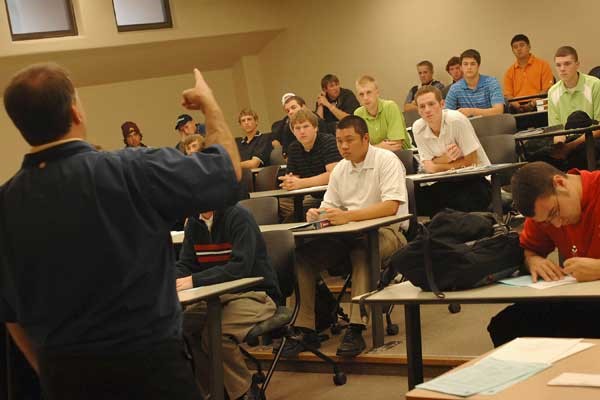
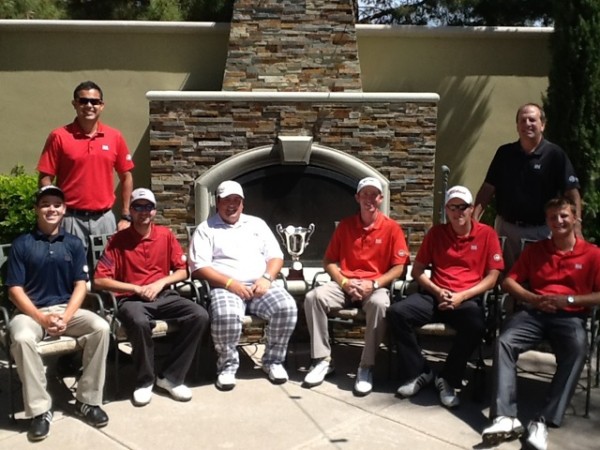














Tom Wishon
May 7, 2015 at 11:13 am
Anyone seriously considering a career in the golf industry via the PGA has to be VERY careful today to diligently investigate their chances for being able to land a good paying position with good job security and opportunity for advancement. There are so many things going on today in the golf business that all add up to the fact that it has become very difficult to make a good living as a PGA professional.
The drop in participation in the game means fewer golfers are playing fewer rounds in total and there is nothing on the immediate horizon to indicate this is going to change anytime soon. More courses are closing each year than are opening. More and more course owners are choosing not to hire a PGA professional to run their operation. More and more course owners are also taking more things away from the position of head pro. The days of the pro owning the shop, getting 100% of his lesson money, getting a cut off the cart revenue, etc are dwindling. And at present there are more PGA members than there are positions for the pros at golf facilities.
No question those who do complete a PGM degree program have a better chance because of the higher level “pedigree” this gives them. But unless you have very good contacts at very successful golf facilities to get your foot in the door, it’s not really the best time for a person to try to jump in new to become a PGA member with a good head professional position.
Sorry to be Johnny Raincloud on this because there is no question the PGM programs are so good in terms of training people to be the best club professional they can be. It’s just not a great time for goof paying jobs in this field.
Tara
May 6, 2015 at 2:40 pm
@mike…
if you do the research, the % of college graduates employed within 6 months after graduation hovers around 60% and that employment may not necessarily be in their field of study. The rate for graduates of PGA Golf Management programs seeking employment is nearly 100% and their compensation equals if not exceeds the average wage for a graduate just out of college. Nearly all of the management level jobs for golf faciltiies are not going to be found on Google but a PGA Member-only search engine portal.
In the state of Florida, golf provides $6 billion of direct revenue to the economy, that is 2nd only to Mickey and the amusement arena.
If you calculate the number of facilities at 15,000 and our membership at 22k, that’s approximately 1.5 PGA pros / facility and many sites employ beyond that number.
There is no doubt that STEM education is valuable and provides good compensation post grad. However, you should look at the incoming test scores on the math component of standardized tests, it is not promising. Millennials are not necessarily all going to gravitate nor qualify for those types of jobs.
I suggest you spend a day in the shoes of a PGA professional of a busy daily fee or upscale private club and you will find that we are not lazy by any stretch.
mike
May 6, 2015 at 5:31 pm
Don’t make stuff up for the sake of argument. I don’t consider working at golf shops, golf ranges, etc as jobs that require or necessitate a 4-5 year college degree. 100% employment is a blatant lie. There are 15,000 golf courses but the vast majority are small operations where they need nor can afford a PGA pro on staff. Even if you have low incoming math scores, working hard for a year or two can easily get you into a STEM related field. If STEM is not up your alley then there are plenty of other choices you can make contrary to what many think in the US. Guess what the PGA of America CEO was before??? LAWYER…
Jordan
May 5, 2015 at 12:02 pm
As a graduate of Arizona State’s PGM program, I can tell you that there is nothing ‘irresponsible and lazy’ about the program as described above. Earning a bachelor degree while affiliating yourself with the PGA of America is a great accomplishment. Students in this program sacrifice a significant amount of time at their internships while most college students take their summers off. As an employer, why wouldn’t you look to graduates of the PGM to fill managerial positions at some of the top golf facilities? In addition to the connections you make within your PGM program, think about the connections within the membership at the golf clubs you will be employed at, you will be rubbing elbows with some of the most successful business men/women in the world. If you love the game of golf and want to begin a career following your passion for the game, the PGM program is certainly a great option to consider.
mike
May 5, 2015 at 8:32 pm
Go search on any job site and tell me how many hits you get with keywords golf or pga. If you happen to get a hit, can you tell me the salary range? Spending 4-5 years of your life and $100K – $200k in tuition for a degree that probably won’t get you a job. Even in the remote chance you do get a job, the salary will be so low you will still be paying off that college loan well into your thirties. If you want to rub elbows with successful business men/women, why don’t you just become one yourself…
Xander Walsh, PGA
May 5, 2015 at 8:54 pm
Don’t need to do a Google search. Salary range starting out if you work year round is in the 22-33K range. Not great, but read on. Ferris State PGM gets plenty of places looking for alumni from the program and that gets posted for our alumni. The PGA has job postings just for people affiliated with the PGA. Neither will be found on this Google you speak of. I spent 4.5 years of my life in school and on internships. Cost was about $70K and I owe about $40K back. I am, however, a Class A PGA member right out of school and going through the PGM programs is the fastest way to obtain PGA membership. I can’t speak for the other schools, but graduating as a Ferris PGM student it’s not a matter of IF you get a job, it’s where.
mike
May 5, 2015 at 9:38 pm
I never mentioned Google search. PGA job postings can be viewed by anyone who registers on the site and the pickings are slim at best. There’s a place for PGA Professionals in this world but definitely not as a 4 year college degree program. There are about 15,000 golf courses in the us. Do you really think that number can support the number of graduates? Also, how many of those courses are desirable places to work at? There are probably less than a 1000 that are top tier facilities and how many Ferris PGM graduates work at those places? You probably want to add golf ranges and golf stores but I don’t believe you go to a 4 year college to work at those places.
Xander Walsh, PGA
May 6, 2015 at 9:45 am
There are plenty of jobs in the industry besides golf courses and plenty of good jobs at places that are not top tier courses. If becoming a PGA Professional is what you want to do and you don’t have a college degree, PGM is the best way to go. I do know a pro who did not get a college degree and went through the apprentice program to earn his PGA card. He’s a head pro at a top tier facility, but it took him a long time to get to that point.
Mark Reischer
May 5, 2015 at 11:41 am
Glad to see lots of PGA professionals posting and commenting!
A friend of mine who has been a member for over 20 years made an interesting point about the “other” golf training programs which made sense to me:
“The PGA of America and PGA Class-A’s should not support or give credit towards those other programs. They aren’t accredited by the PGA and directly compete with jobs that a PGA member could have had. I don’t understand why any Class-A professional would become a teacher at those schools because you are part of an organization and we have to look out for each other. Those programs don’t support the PGA of America, they directly compete against us. Any Head Professional or Class-A in a position of management (or that hires people) should not be hiring anybody who did not come from a PGM school/went through or going through the PGA program.”
Again, made sense to me. Thoughts?
mike
May 5, 2015 at 2:55 am
If you are senior in high school and love golf? It’s not too late so start studying hard in anything related to STEM, then work hard and save your money. As long as you are disciplined, you should be able to start enjoying the fruits of your labor (like playing golf for fun at very nice courses) as early as when you turn 30. Spending (actually wasting) 4 – 5 years in college to become a PGA professional? Not a good idea. Actually, it’s irresponsible and lazy. I know it sounds great that you do “golf” stuff in college but really think about your future. Do you want a job that will get you “at most” about 30k – 50k a year + some free golf? Leaders in golf are exclusively former lawyers. Leaders in the golf industry are mostly businessmen, financiers, entrepreneurs, and engineers.
Andy Nelson PGA
May 5, 2015 at 10:04 am
Graduating with a Bachelors in Business Administration I do not think for a second that I “wasted my time” as you sincerely quoted in your response. There are actually people in this world that choose to follow their dreams and work hard at it to make a decent living. Plus there are countless PGA Professionals pulling in six figures a year. Also there is no guarantees in the job market these days, and your debate with studying STEM, I have an older sister that studied engineering at Boston University, Purdue, and Notre Dame and she still cannot find employment.
Please think twice before offending the people that truly embrace and love this game enough to devote the better part of their lives to grow the game.
mike
May 5, 2015 at 8:07 pm
You have an older sister that went to 3 different colleges? Did she graduate any of them? 90% of those who graduates with an engineering degree get jobs immediately out of school and the rest get a job at a later time. Just go to monster.com and search “PGA” or “GOLF” and take note of how few jobs there are. Now go to monster.com and search “ENGINEERING” or “PROGRAMING” and take note of numerous results you will get. Average starting salary for a junior programmer (with absolutely no experience) is $75K – $90k and the average salary for a senior programmer is about $250k. Another important point is that there are plenty of these jobs available. Compare that to PGM and Business Administration type jobs… First of all, there aren’t many jobs available. Even if there are available jobs, you need experience and/or connections. Six figures? You may know a few that make six figures but that’s not the norm (and you know it!). Guess how much those PGA Pro’s at Dick’s were getting paid before they got laid off?
mike
May 5, 2015 at 8:49 pm
Your older sister went to 3 different colleges? Did she graduate any of them? 90% of engineering graduates get a job immediately after college and the rest eventually find a job at a later time. You may know of a few PGA Pros that pull in six figures but that’s definitely not the norm (and you know it). Average starting salary for a junior programmer (with absolutely no experience) is $90k. Average salary for a senior programmer is $250k+++. Go to any job site and you will see thousands upon thousands of job openings that are STEM related. Unlike many PGM relate jobs where you need to “know” someone or have some connections, STEM type jobs are purely based on your skills.
Andy
May 6, 2015 at 10:36 pm
Three different schools, one for her bachelors, the next school masters, finally the third PHD
Just wanted to clarify.
I also agree with you that you definitely do not need to attend a PGM school to work in the business, however the road to being able to support yourself in this field can be a lot tougher if you don’t.
I appreciate your input and I can say that a career in the golf business isn’t for everyone but it can be a real blast for the select few that have the right determination and passion for this great game we all love.
Austin
Feb 23, 2017 at 1:33 pm
Mike,
You should actually do some research on the PGM program and what career paths you can have after you graduate. Guess what, they aren’t all career paths to be an assistant pro at a muni or dicks. There is golf club design/repair, merchandising retail, tournament operations, broadcasting, journalism, the list goes on. Just like anything else, hard work and dedication will lead you places. Do you also know how many students are studying to become engineers and programmers right now? probably about a few thousand times more than those studying to become apart of the PGA. If you want a job as a pga teaching pro, thats exactly what you’ll without a worry. If you want to go into the business or journalism side, being a member of the PGA of America adds tons of credibility. Not everyone wants to slave their lives away for 20 years to try and make 250k a year so they can retire at age 50 and THEN start playing golf. A simpler mindset of trying to actually get something out of your career other than a dollar sign is more common than you seem to think
George Jones
May 1, 2015 at 11:26 pm
This was a refreshing article. I’ve often overlooked the gentlemen working behind the counters at local pro shops and golf courses on their affiliation to the pga or what they mean when they say staff taylormade player etc. I wouldn’t mind actually reading what that means.
Andy Nelson PGA
May 1, 2015 at 12:16 pm
Great article! I attended a PGM school, Methodist University, and it was the best 4 years of my life! It was like going to college with 300 golf buddies. The education and connections I got are truly priceless and have set me apart in this great business.
Kyle Brannan
May 1, 2015 at 7:16 pm
Andy was my suite mate on my first internship in Minnesota!
Tom Otto
May 2, 2015 at 2:05 am
Hey Kyle! I’m at the PGM Program at coastal carolina and I read that you did your internship in MN! I’m from there and going back this summer to intern at TPC Twin Cities. If you don’t mind me asking, where do you go for your internship in MN?
Andy Nelson PGA
May 2, 2015 at 11:36 am
We worked at Madden’s Resort in Brainerd Minnesota
I am originally from Duluth but a Floridian now 🙂
Tom Otto
May 2, 2015 at 10:22 pm
That’s awesome! I go up there sometimes in the summer. Great set of golf course out there.
Andy Nelson PGA
May 2, 2015 at 9:50 am
Hey Brother! Hope all is well!
Jenny
May 3, 2015 at 9:18 am
Hey guys, remember that time you turned me into Swiss cheese?
Brandon
May 1, 2015 at 12:15 pm
But does the industry give you enough to succeed? Are there enough good jobs to where you can make a decent living?
These are the questions I would be interested in learning the answers to
Xander Walsh, PGA
May 5, 2015 at 8:57 pm
The industry gives you nothing. You earn it. Yes, you can make a living in the golf industry. It will probably take time and hard work though.
LorenRobertsFan
May 1, 2015 at 12:08 pm
*if
LorenRobertsFan
May 1, 2015 at 12:06 pm
I’m in the program at Mississippi State. I couldn’t recommend it enough of you are interested in being prepared for a career as a PGA Professional. The internships, faculties, and seminars give you everything you need to succeed
Josh
May 1, 2015 at 1:10 pm
Hail State!